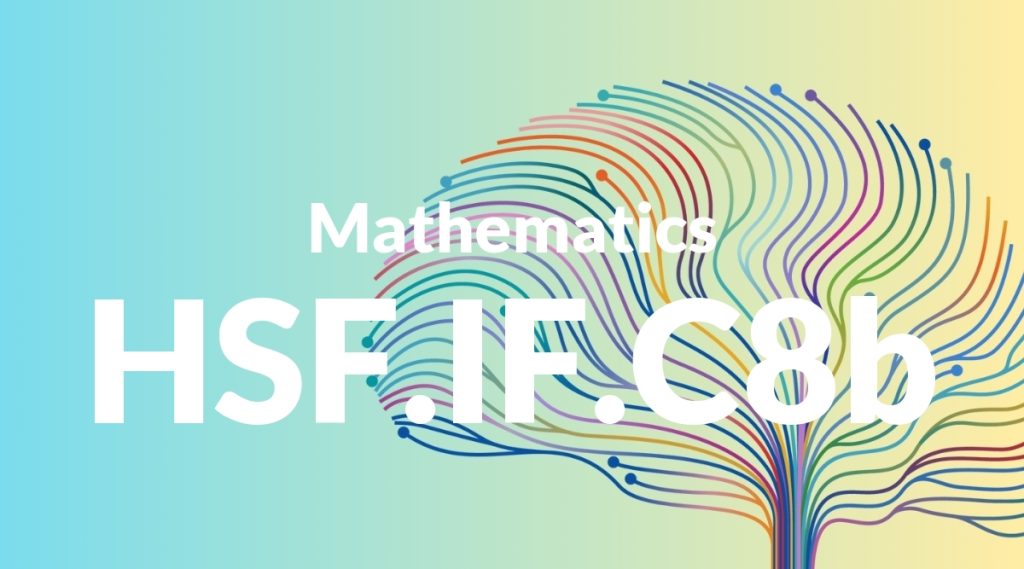Standard: HSF.IF.C8b – Use the properties of exponents to interpret expressions for exponential functions. For example, identify percent rate of change in functions such as y = (1.02)^t, y = (0.97)^t, y = (1.01)12^t, y = (1.2)^t/10, and classify them as representing exponential growth or decay.
Grade level: High School: Functions
Subject: Mathematics
Domain: Interpreting Functions
Teacher Overview
This standard focuses on interpreting expressions for exponential functions using the properties of exponents. It is crucial for students to understand how to identify and classify exponential growth and decay, which has wide applications in various fields such as biology, finance, and physics. Students should be comfortable with algebraic manipulations and have a foundational understanding of exponents and basic functions.
Students will be able to analyze more complex exponential models and apply these concepts to real-world scenarios. They will also be prepared to learn about logarithmic functions and their applications.
Common Misconception 1
A common misconception is that all exponential functions represent growth. This is incorrect because exponential functions can also represent decay, depending on the base of the exponent.
Intervention 1
Use visual aids such as graphs to show the differences between exponential growth and decay. Provide real-world examples to reinforce the concept.
Common Misconception 2
Another misconception is confusing the base of the exponent with the rate of change. The base determines whether the function represents growth or decay, while the rate of change indicates how quickly the function grows or decays.
Intervention 2
Provide practice problems that require students to identify the base and rate of change separately. Use examples that clearly distinguish between the two concepts.
Prerequisite Knowledge
Students should have a solid understanding of basic algebra, including manipulating algebraic expressions and solving linear equations. They should also be familiar with the concept of exponents and basic functions.
Subsequent Knowledge
After mastering this standard, students will be able to analyze more complex exponential models and apply these concepts to real-world scenarios in science, finance, and other fields. They will also be prepared to tackle logarithmic functions and their applications.
Instructional Activities
- Graphing exponential functions to visualize growth and decay
- Solving real-world problems involving exponential growth and decay
- Group activities to classify different exponential functions
- Interactive simulations to explore the impact of different bases and exponents




